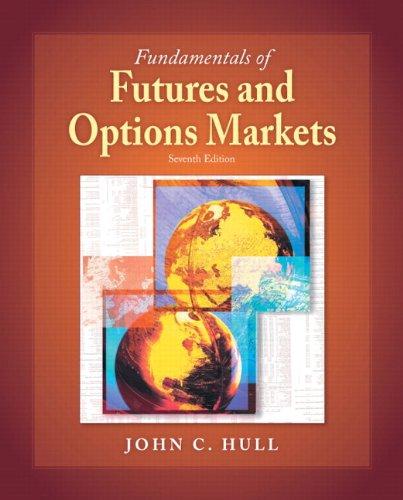Question
After also watching this weeks video, do you think that Mertons whole milk illustration can apply to dividends also, especially the monthly vs. quarterly issue?
After also watching this weeks video, do you think that Mertons whole milk illustration can apply to dividends also, especially the monthly vs. quarterly issue?
Read the article on Merton H. Miller.
http://www.econlib.org/library/Enc/bios/Miller.html
Article:
In 1990, U.S. economists Merton H. Miller, Harry Markowitz, and William F. Sharpe shared the Nobel Prize for their pioneering work in the theory of financial economics. Millers contribution was the Modigliani-Miller theorem, which he developed with Franco Modigliani while both were professors at Carnegie Institute of Technology. (Modigliani had earned the prize in 1985 for his life-cycle model of saving and for the Modigliani-Miller theorem.)
The Modigliani-Miller theorem says that under certain assumptions, the value of a firm is independent of the firms ratio of debt to equity (see corporate financial structure). Miller once gave a colorful analogy to try to simplify his and Modiglianis insight:
Think of the firm as a gigantic tub of whole milk. The farmer can sell the whole milk as it is. Or he can separate out the cream, and sell it at a considerably higher price than the whole milk would bring. (Selling cream is the analog of a firm selling debt securities, which pay a contractual return.) But, of course, what the farmer would have left would be skim milk, with low butter-fat content, and that would sell for much less than whole milk. (Skim milk corresponds to the levered equity.) The Modigliani-Miller proposition says that if there were no cost of separation (and, of course, no government dairy support program), the cream plus the skim milk would bring the same price as the whole milk.1
Miller was a strong defender of the view that futures contracts, just like other products, are valuable to those who buy them. Therefore, he argued, government regulation of these contracts is likely to do more harm than good. His book Merton Miller on Derivatives is full of insights about derivatives.
Miller earned his undergraduate degree at Harvard University in 1944 and went on to work as a tax expert at the U.S. Treasury Department. He later earned his Ph.D. in economics at Johns Hopkins University. He taught at Carnegie from 1953 to 1961, and in 1961 became a professor at the University of Chicagos Graduate School of Business, where he was the Robert R. McCormick Distinguished Service Professor. He became a public governor of the Chicago Mercantile Exchange in 1990.
Video transcript on dividends:
Shares of Prospect Capital (NASDAQ:PSEC) stabilized on Tuesday -- trading up slightly on the day as of mid-afternoon -- after falling sharply Monday on high volume, in reaction to news about the company's dividend policy. On the positive side of the company's announcement, investors will be treated to monthly dividend payments going forward, versus the prior quarterly dividend frequency. In general, proponents of a monthly dividend argue that retirees looking for steady income are more attracted to monthly dividend payers, and that the higher demand for those monthly paying stocks among income investors can translate into a higher stock price with a lower yield.
On the negative side to Prospect's dividend announcement, the new monthly rate over the course of a three month period amounts to just over 30 cents, a sharp cut as compared to the prior quarterly dividend rate of 41 cents, and erasing about four years of dividend increases -- bringing investors back to the dividend level the company paid back in March 2006. And the new monthly payout begins with the month of June, meaning for the quarter covering April, May, and June, investors will only receive a 10 cent payment for June, which the company lists as a quarterly payment on the dividend page of its website.
Among Prospect's industry peers, Gladstone Capital (NASDAQ:GLAD) and Main Street Capital (NYSE:MAIN) are both monthly payers, and trade at yields of 7.6% and 9.8% respectively. Meanwhile quarterly payers include Apollo Investment Corp (NASDAQ:AINV) and Ares Capital (NASDAQ:ARCC) which both trade at higher yields -- 11.1% and 10.3% respectively. How much of the valuation difference is driven by the monthly payout is anybody's guess, but bulls suggest if Prospect's new steady payout eventually translates into a higher share price for a lower yield -- say 10% versus the current 11.7% yield -- that means shares could appreciate in price by about 18% from current levels.
Step by Step Solution
There are 3 Steps involved in it
Step: 1

Get Instant Access to Expert-Tailored Solutions
See step-by-step solutions with expert insights and AI powered tools for academic success
Step: 2

Step: 3

Ace Your Homework with AI
Get the answers you need in no time with our AI-driven, step-by-step assistance
Get Started


